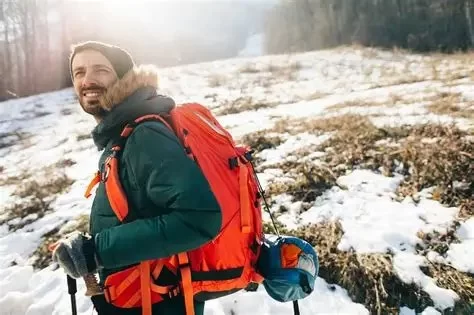The Joys of Winter Backpacking: A Guide to Cold-Weather Adventures
- 1 - Embracing the Winter Wilderness
- 2 - Essential Gear for Winter Backpacking
- 3 - Navigating and Staying Safe in Cold Conditions
- 4 - Real-World Experiences from the Trail
- 5 - Preparing Your Body and Mind
- 6 - Choosing Your Perfect Winter Backpacking Destination
1. Embracing the Winter Wilderness
Winter backpacking offers a unique way to experience nature’s beauty without the crowds of peak hiking season. Snow-covered landscapes, crisp air, and the quiet serenity of the cold can transform familiar trails into magical wonderlands.
While summer trips bring vibrancy and warmth, winter adventures test your adaptability and resilience, giving you a deeper connection to the outdoors.
2. Essential Gear for Winter Backpacking
The right gear can make or break a winter trip. Key items include a four-season tent, an insulated sleeping bag rated for sub-zero temperatures, waterproof boots, and layered clothing to regulate body heat.
Don’t overlook essentials like hand warmers, a reliable stove that works in cold conditions, and a headlamp with extra batteries since daylight hours are shorter. At Pine Cliff Resort, many experienced adventurers find specialized cold-weather equipment that keeps them safe and comfortable.
3. Navigating and Staying Safe in Cold Conditions
Snow and ice can obscure trails, making navigation more challenging. Carry a GPS device, map, and compass, and know how to use them. Always check avalanche forecasts if traveling in mountainous regions, and be aware of frostbite and hypothermia symptoms.
Planning shorter travel days allows for setting up camp before sunset, which is crucial in cold temperatures.
4. Real-World Experiences from the Trail
Backpacker Jenna Martin recalls a trip through Minnesota’s Boundary Waters in January, where nighttime temperatures dipped below -20°F. With proper preparation, she not only stayed safe but also found a peaceful solitude she had never experienced in summer.
Stories like Jenna’s highlight the rewards of pushing past comfort zones and embracing nature in its rawest form.
5. Preparing Your Body and Mind
Winter backpacking demands both physical stamina and mental resilience. Training hikes with a loaded pack, cold-weather camping practice, and learning winter survival skills can boost confidence. Mental preparation helps you adapt to unexpected challenges, from sudden snowstorms to frozen gear.
This readiness ensures that the trip becomes an adventure rather than a struggle.
6. Choosing Your Perfect Winter Backpacking Destination
From the snow-draped trails of the Appalachian Mountains to the vast frozen lakes of the Midwest, winter backpacking destinations vary in difficulty and climate. Beginners might choose lower-elevation routes with established campsites, while seasoned adventurers may seek remote, untouched wilderness.
No matter your choice, pairing the right location with the right gear ensures a memorable experience that’s as safe as it is rewarding.







